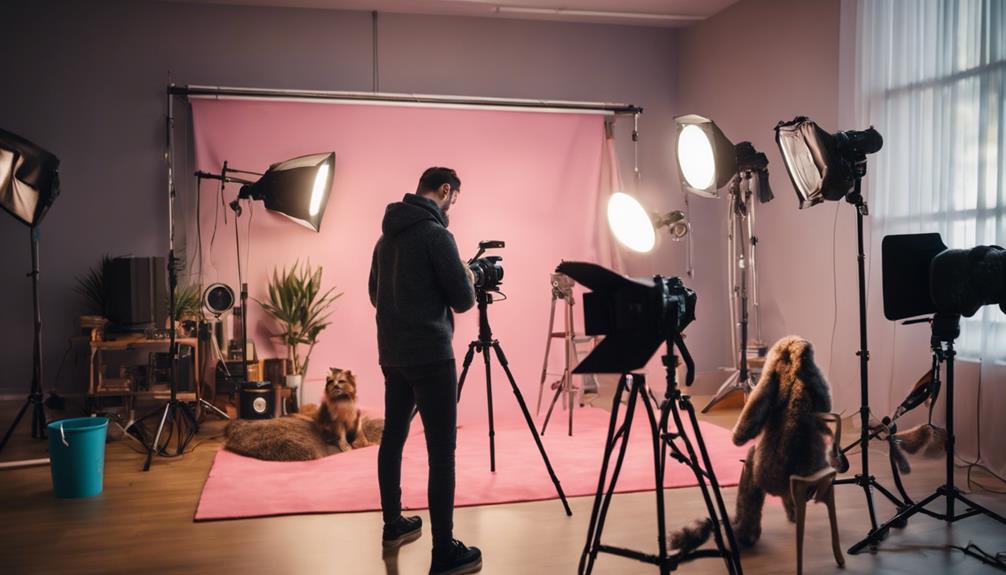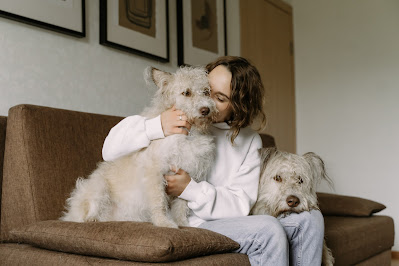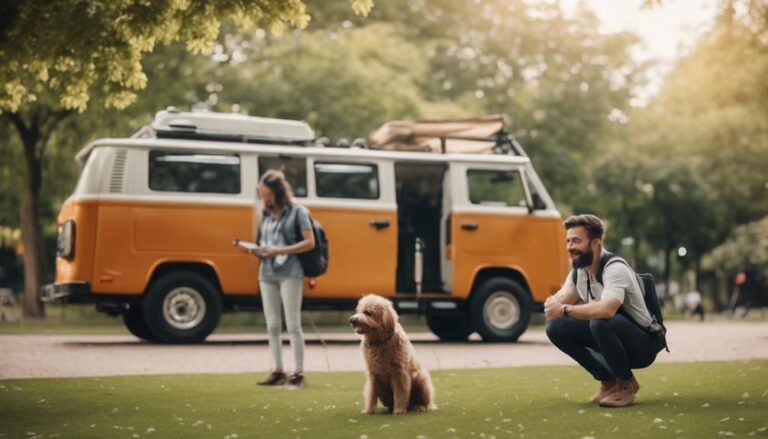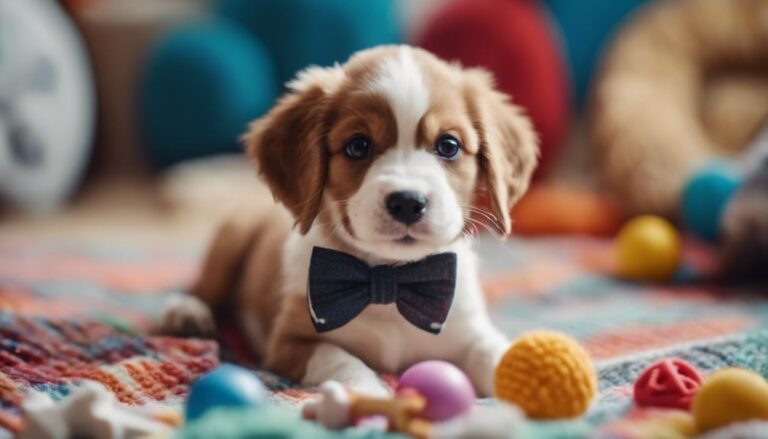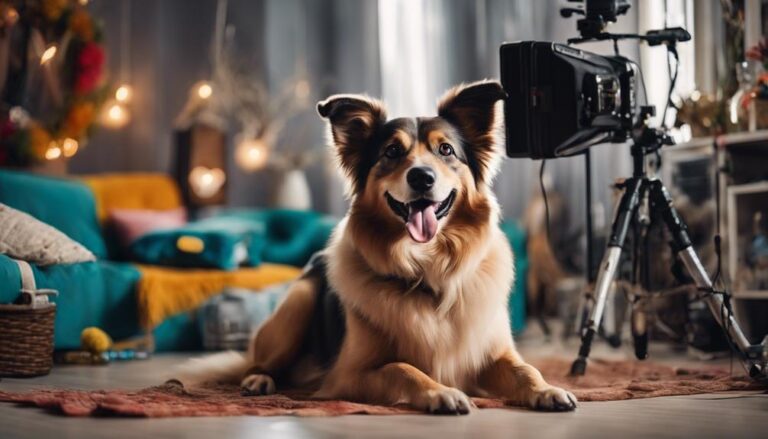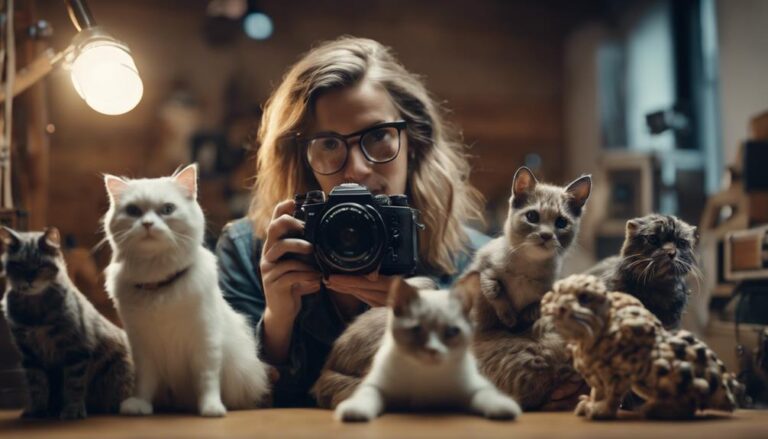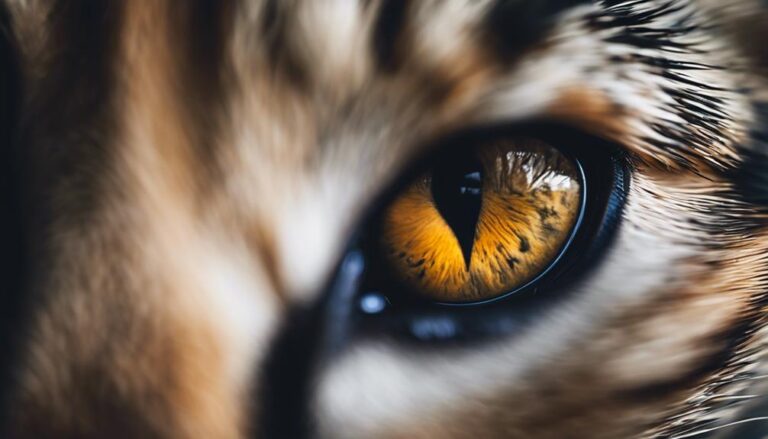If you're keen to elevate your pet photography skills, consider enrolling in pet portrait photography courses. Enhance your abilities and capture beautiful animal images professionally. Discover technical aspects and creative compositions that bring out unique pet personalities. These courses can equip you for pet fashion and outdoor adventures too. Choose the right course based on your skill level and photography goals. Look for instructors that match your learning style and expertise level. Make a decision according to your preferred learning environment and schedule. Further insights await on choosing the perfect course for you.
Benefits of Pet Portrait Photography Courses
By enrolling in pet portrait photography courses, you can enhance your skills and capture stunning images of animals in a professional setting. These courses not only teach you the technical aspects of photography but also provide insights into creative compositions that can truly bring out the unique personalities of the pets you photograph. Imagine being able to frame a shot in a way that highlights the playful nature of a dog or the elegance of a cat. Pet portrait photography courses can help you achieve just that.
Moreover, delving into pet portrait photography can open up opportunities beyond just capturing images. Many animals are involved in pet therapy, where their interactions with humans have a healing effect. By learning how to photograph these therapy animals, you can contribute to spreading awareness about the positive impact they have on people's lives.
Additionally, pets are increasingly becoming a part of various lifestyle trends, including pet fashion and outdoor adventures. Learning pet portrait photography can equip you with the skills to showcase pets in these settings, whether it's capturing their stylish outfits or documenting their exciting escapades in nature. So, not only does enrolling in these courses benefit your photography skills, but it also allows you to be a part of these diverse and dynamic pet-related industries.
Choosing the Right Course for You
To select the most suitable pet portrait photography course for you, consider your current skill level and photography goals. When choosing the right instructor, look for someone who aligns with your learning style and expertise level. A seasoned pet photographer may offer a more advanced course focusing on intricate techniques, while a beginner may benefit from a course designed to build foundational skills.
Online courses provide flexibility and convenience, allowing you to learn at your own pace from the comfort of your home. These courses often offer a variety of resources such as video tutorials, assignments, and online forums for interaction with instructors and other students. On the other hand, in-person courses provide a hands-on learning experience with immediate feedback from the instructor. This format can be beneficial for those who prefer direct guidance and interpersonal interaction during the learning process.
When deciding between online and in-person courses, consider your preferred learning environment and the amount of time you can dedicate to the course. Online courses offer convenience and flexibility, while in-person courses provide a more immersive learning experience. Ultimately, the best course for you will depend on your individual preferences and learning style.
Essential Equipment for Pet Photography
You need to understand the right camera settings for pets, the best lighting techniques, and how to incorporate props effectively for stunning pet photos. Let's explore these essential equipment aspects to elevate your pet portrait photography skills. Mastering these elements will help you capture the perfect moments with your furry subjects.
Camera Settings for Pets
When photographing pets, adjusting your camera settings is crucial to capturing their unique personalities and characteristics effectively. Start by setting your camera to a fast shutter speed to freeze their movements, especially for active pets. Use a wide aperture to create a shallow depth of field, making your pet the focal point while blurring the background. Experiment with different camera angles to capture intriguing perspectives, such as getting down to their eye level or shooting from above. Consider using editing techniques like adjusting contrast and color saturation to enhance the vibrancy of your pet's fur or eyes. By mastering your camera settings, you can elevate your pet photography skills and create stunning portraits that truly showcase their charm.
Lighting Tips for Pets
Effective lighting is key to capturing mesmerizing pet portraits, enhancing their features and bringing out their unique personalities in photographs. When deciding on lighting for your pet photography, consider the differences between natural and artificial lighting. Natural light can create a soft and warm ambiance, perfect for outdoor shoots, while artificial lighting allows for more control over brightness and color temperature, ideal for indoor settings. For indoor pet photography, you may need to use additional lighting sources like softboxes or ring lights to avoid harsh shadows. When shooting outdoors, take advantage of the golden hour, the period shortly after sunrise or before sunset, for beautifully lit pet portraits. Experiment with both indoor and outdoor lighting to find what works best for your furry subjects.
Props for Pet Photos
To capture enchanting pet photos, having the right props is essential in enhancing your pet photography skills. When it comes to pet fashion, consider using colorful bandanas, hats, or even tiny bow ties to add a touch of personality to your furry friend's photoshoot. Props like playful toys or treats can help keep your pet engaged and bring out their playful side. Additionally, incorporating pet grooming items such as brushes or cute hair accessories can elevate the overall look of your pet portraits. Remember, the right props can make a significant difference in the quality of your pet photos, so experiment with different options to find what works best for your four-legged models.
Tips for Capturing Pet Portraits
When capturing pet portraits, consider the lighting to enhance your photos. Positioning your pet well is essential for a great shot. Choose backgrounds that complement your pet's fur and personality.
Lighting for Pet Portraits
Consider adjusting the angle of light to enhance the features of your furry subjects when capturing pet portraits. When it comes to lighting for pet portraits, here are some key points to keep in mind:
- Natural vs artificial lighting: Experiment with both natural light sources like windows and doors, as well as artificial lighting such as lamps or flashes.
- Creative lighting techniques: Try using backlighting to create a halo effect around your pet, or sidelighting to add depth and dimension to the image.
- Avoid harsh shadows: Soften the light by using diffusers or reflectors to create a more flattering look.
- Bear in mind the direction: Make sure that the light source is not directly in front of the pet, which can cause squinting or overexposure in the photo.
Pet Posing Tips
Experiment with different poses to highlight the unique personality and character of your furry friend in pet portraits. Try various pet posing techniques to bring out their individuality. Encourage natural movements like running, jumping, or sitting in their favorite spot. Capture close-up shots focusing on their eyes or playful expressions. Get down to their level for creative compositions that showcase their perspective. Utilize props or toys to add interest and create a story within the photo. Incorporate elements from their environment to enhance the narrative. Keep the session fun and relaxed to capture genuine emotions. Remember, the goal is to capture your pet's essence through imaginative poses and compositions.
Background Choices
Choose backgrounds that complement your pet's fur color and contrast it to make them stand out in pet portraits. When selecting backgrounds, think about the colors that will enhance your pet's features and create a visually appealing composition. Here are some tips to help you with background selection and creativity:
- Consider using simple, solid-colored backgrounds to keep the focus on your pet.
- Experiment with textured backgrounds to add depth and interest to your photos.
- Use natural settings like parks or gardens for a classic and timeless look.
- Incorporate editing software techniques to adjust the background if needed, such as blurring or adding filters to make your pet pop in the photo.
Post-Processing Techniques for Pet Portraits
Elevate your pet portraits with professional post-processing techniques to bring out the best in your images. Post-processing techniques play an important role in enhancing your pet photography to the next level. Creative editing allows you to add unique elements to your portraits, making them stand out and truly capturing the essence of your furry subjects.
Portrait retouching is an essential part of post-processing pet portraits. It involves refining details, such as fur texture and facial features, to make sure your pet looks their best in the final image. By carefully retouching your pet portraits, you can create stunning and polished photographs that clients will love.
Color correction is another essential aspect of post-processing. It helps enhance the colors in your pet portraits, making them vibrant and true to life. Adjusting the color balance, saturation, and tones can make a significant difference in the overall look and feel of your images. Whether you want to create a warm and cozy atmosphere or a bright and playful mood, color correction allows you to achieve the desired effect.
Marketing Your Pet Portrait Photography Business
Curious about how to effectively market your pet portrait photography business? When it comes to promoting your services and reaching a wider audience, there are several strategies you can implement to boost your brand and attract more clients.
- Utilize Social Media: Leverage platforms like Instagram, Facebook, and Pinterest to showcase your work, engage with potential clients, and build a strong online presence. Consistent posting and utilizing relevant hashtags can help increase your visibility.
- Focus on Branding: Develop a unique brand identity that reflects your style and values. A cohesive brand image across your website, social media profiles, and marketing materials can help establish credibility and make your business more memorable.
- Network with Peers: Attend industry events, join photography groups, and participate in online communities to connect with other professionals. Building relationships with fellow photographers can lead to referrals and collaborations that benefit both parties.
- Collaborate with Pet-related Businesses: Partnering with pet groomers, veterinarians, or pet boutiques can be a mutually beneficial way to expand your reach. Consider offering joint promotions or photo sessions to tap into each other's client bases.
Advanced Techniques and Specializations
When looking to elevate your pet portrait photography business to the next level, exploring advanced techniques and specializations can set you apart in the competitive market. Advanced lighting techniques can greatly enhance the quality of your pet portraits. Experiment with different lighting setups to create unique and visually appealing images. Whether you prefer natural light for a soft and organic feel or artificial lighting for a more pivotal look, mastering advanced lighting can add depth and dimension to your pet portraits.
In addition to advanced lighting, creative editing plays a vital role in refining your pet portraits. Use editing software to enhance colors, adjust contrast, and remove any distractions in the background. Incorporating creative editing techniques can help you achieve a signature style that resonates with your target audience. Experiment with various editing tools to bring out the personality and charm of the pets you photograph.
Specializing in certain types of pet photography, such as action shots, underwater portraits, or themed sessions, can further distinguish your business in the market. By honing your skills in a specific niche, you can attract clients looking for a photographer with expertise in that area. Consider offering unique services that cater to niche markets to expand your clientele and establish yourself as a sought-after pet portrait photographer.
Frequently Asked Questions
Can I Bring My Own Pet to Practice During the Course?
Yes, you can bring your own pet to practice during the course. It's a hands-on approach to learn pet behavior. The pet-friendly locations provide practical practice opportunities for you to capture memorable moments with your furry friend.
Are There Any Discounts Available for Enrolling in Multiple Pet Portrait Photography Courses?
Yes, there are discounts available for enrolling in multiple courses. By enrolling in course bundles, you can enjoy savings on your tuition. Eligibility for discounts is based on multiple enrollments. Take advantage of this offer!
How Can I Find Pet Models to Practice on Outside of the Course?
To find pet models to practice on, check out local animal shelters or visit nearby parks. You can meet adoptable pets and connect with their owners who may be willing to let you photograph their furry friends.
Are There Any Opportunities for Networking With Other Pet Portrait Photographers During the Course?
Sure, networking opportunities and community building are essential in any field. During the course, you can connect with other pet portrait photographers, share ideas, and gain insights. These interactions can lead to valuable connections and collaborations.
Is There a Specific Certification or Accreditation I Can Earn Upon Completing the Course?
Upon completing the course, you can earn a certification or accreditation. It validates your practice and experience in pet portrait photography. It's a great way to showcase your skills and knowledge in the field.
Conclusion
Now that you have completed pet portrait photography courses, you are equipped with the skills and knowledge to capture stunning images of furry friends. Remember to showcase your unique style, utilize essential equipment, and apply post-processing techniques to enhance your work. With dedication and practice, you can establish a successful pet portrait photography business and even explore advanced techniques and specializations in the future. Keep honing your craft and sharing the joy of pet photography with others.

